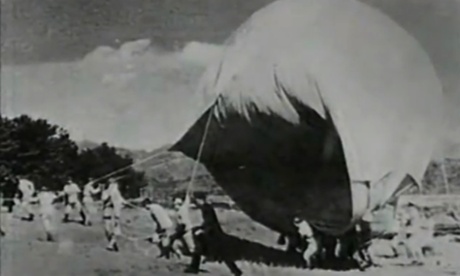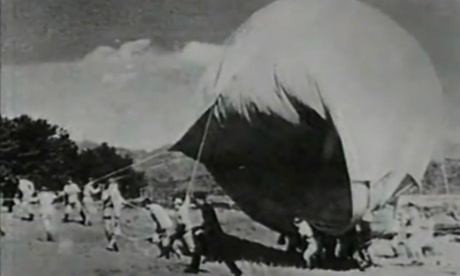Most Americans have no idea that the American mainland was attacked prior to 9/11. World War II history buffs may know that during 1942, shelling occurred by Japanese submarines in a few coastal areas of Oregon and California. This may have been in retaliation for the Dolittle raid which bombed Tokyo and a few other Japanese cities in April of 1942. The effect of the raid was negligible in slowing the Japanese war effort, but was a successful morale booster for the US that had recently experienced the attack on Pearl Harbor. The shelling of the US coast caused little harm and no deaths were reported. However, another attack occurred in 1944 of an unusual nature, that could have instilled a degree of panic, had Americans been aware of it. But, a media blackout was in effect and few knew about it.
By 1944, the Japanese were losing the war and began suffering bombing raids a hundred times greater than the Dolittle raid of 1942. Firestorms were created by incendiary bombs, destroying large city sections in one night. As a way to retaliate, shelling by submarine was ineffective and no longer feasible, and the Japanese Navy had insufficient resources to attack US cities, fighting a losing battle in the Pacific. Desperate to avenge American bombing campaigns, a novel form of terror weapon was created using hydrogen filled balloons to carry explosives and incendiary devices to the US mainland. Each had an altimeter and a system of sandbags to control altitude. In terms of accuracy, little could be done to control it, other than send it aloft to 30,000 feet where jet stream currents traveled eastward. Approximately 9000 balloon weapons were launched in 1944 and 1945 before the end of the war, but only a few hundred are assumed to have reached the US mainland, many others traveling as far north as Alaska and as far south as Mexico, or landing in the ocean. Fire or damage caused by the weapons was minimal, partly due to a wet winter experienced in the US during which many of the balloons were launched.
One weapon though, had a disastrous effect for the people of Klammath Falls, Oregon, a town small enough that everyone was considered a neighbor for those who lived there. A picnic planned by a group of kids ended in tragedy when they found one of the weapons in a forested area of Gearheart Mountain. Not knowing what it was, one of them triggered the weapon, and the resulting explosion took the lives of 5 kids and a pregnant women who was with them. The only survivor was Archie Mitchell, a young pastor of a local church and leader of the picnic.
Annie Fagen had intended to join her friends on the picnic, but was delayed to ride with her mother who needed new glasses. Very soon, she learned what had happened to her friends as the news spread quickly through town. “A group of girls came up and asked if I’d heard what had happened,” she says now, recalling that day long ago. “ They said there was an explosion, that they had been killed, but it was a military secret.” No one in town understood the cause of the explosion, as the military quickly took control of the scene in the woods. “We didn’t known anything about the balloons. No one told us,” she said.
The main concern of the military was keeping the Japanese in the dark so they wouldn’t know if their weapons were reaching the US or having any effect. One other odd occurrence took place at the nuclear production facility in Hanford, Washington, as one of the balloons struck power lines, causing a brief halt in the production of plutonium used for the atomic weapon that later devastated Nagasaki, The Guardian reports.
After the picnic disaster, secrecy was no longer enforced, but few people heard about the balloon weapons and they have remained an obscure part of WWII history for 70 years. As a way of condolence, Japanese women who as young girls helped construct the balloon weapons, came to Klammath Falls in 1987 to meet the local people and apologize. “Those young girls, they just had to do what they were told,” said Annie Fagan. Dinners and a dedication ceremony were held in honor of the meeting.

